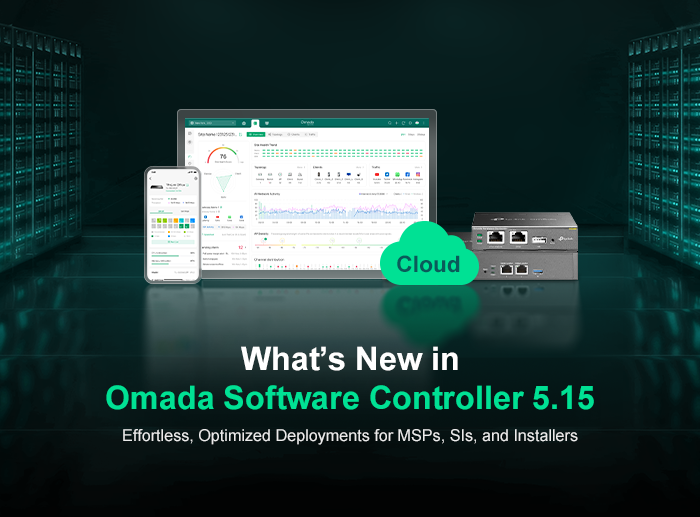What Is SD-WAN (Software-Defined WAN)?
The way businesses connect to the internet is changing, and SD-WAN is part of that change. SD-WAN (Software-Defined Wide Area Network) is a modern networking solution that uses software to manage and control wide-area networks.
It helps businesses connect different office locations securely and efficiently using the internet, without relying only on expensive traditional connections like MPLS.
Knowing what SD-WAN is and how it works can explain why so many businesses are moving toward this technology.
Why SD-WAN Matters
Most companies today use cloud services, video conferencing, and remote work more than ever. These activities need strong, rapid, and reliable connections between offices, data centers, and cloud platforms.
Traditional WANs, which use private lines like MPLS, can be expensive and slow to adapt to changing needs. SD-WAN helps solve these problems by offering better performance for cloud applications, lower operational costs, stronger network security, and greater flexibility and control.
With SD-WAN, businesses can use cheaper internet connections like broadband or LTE alongside private lines. It automatically routes traffic through the best path based on real-time conditions, helping users get a faster and more stable experience.
How SD-WAN Works
SD-WAN uses software and cloud technology to manage how data travels across a wide-area network. Instead of relying only on physical routers or fixed circuits, SD-WAN has a centralized controller that manages traffic flow intelligently.
Here’s how it works:
-
Virtual overlay - SD-WAN creates a virtual layer on top of the existing network. This allows it to separate control and management from the hardware itself.
-
Centralized control - Network administrators use a single dashboard to set rules and policies. For example, they can give video calls priority over file downloads.
-
Real-time traffic routing - SD-WAN monitors the health of network paths and sends data through the most efficient one. If a path becomes slow or unreliable, it switches to a better route automatically.
-
Encryption and security - All traffic between locations is encrypted. SD-WAN also includes built-in firewalls, intrusion prevention, and secure tunneling to protect data.
Important Features of SD-WAN
Here are some important features that make SD-WAN different from traditional WANs:
-
Application-aware routing - SD-WAN identifies different types of traffic (like video, email, or cloud services) and chooses the best path for each.
-
Multiple connection types - It supports MPLS, broadband, LTE, and satellite links at the same time. This adds flexibility and helps reduce costs.
-
Centralized management - Admins can configure and update all network devices from a single platform, saving time and reducing human error.
-
Security - Many SD-WAN solutions include built-in firewalls, VPNs, and threat detection tools to secure data in transit.
-
Cloud readiness - SD-WAN works well with services like Microsoft 365, Google Workspace, AWS, and Azure by sending traffic directly to the cloud instead of routing it through a central data center.
Benefits of Using SD-WAN
SD-WAN offers several benefits that help businesses improve performance while keeping costs under control.
-
Lower costs - Businesses can use cheaper internet connections instead of MPLS. This reduces the cost per site without sacrificing quality.
-
Better user experience - SD-WAN improves how applications perform by choosing the best path for each type of traffic. Employees get faster cloud access, clearer video calls, and smoother remote work experiences.
-
Easier network management - Instead of managing each branch office manually, IT teams can control the entire network from one interface. Updates, patches, and policies are pushed out quickly.
-
Increased security - With end-to-end encryption, secure tunnels, and built-in threat detection, SD-WAN protects sensitive business data across all sites.
-
Business continuity - If one connection fails, SD-WAN automatically switches to another. This means less downtime and more consistent operations.
Who Should Use SD-WAN?
SD-WAN is a good fit for:
-
Businesses with multiple locations - Retail chains, banks, and franchise operations often need to connect many branches to a central office or cloud services.
-
Companies using cloud applications - SD-WAN can optimize access to cloud-based tools like CRMs, ERPs, and video conferencing platforms.
-
Organizations with remote workers - SD-WAN can extend secure and high-performing connections to remote employees without costly hardware setups.
-
Industries with sensitive data - Healthcare, finance, and legal sectors benefit from SD-WAN’s security features and compliance capabilities.
What Is SD-WAN Used For?
Some common ways SD-WAN is used include connecting branch offices to cloud services directly, prioritizing business-critical applications like VoIP and video calls, supporting remote or hybrid workforces with secure access, replacing or supplementing MPLS with cheaper broadband connections, and ensuring smooth operation during outages or network failures.
SD-WAN vs Traditional WAN
-
Cost: Traditional WANs rely on expensive MPLS circuits. SD-WAN allows the use of affordable internet links, helping cut down operational costs.
-
Flexibility: Traditional WANs are often rigid and hard to scale. SD-WAN provides high flexibility with support for different link types and easy expansion.
-
Cloud performance: In a traditional WAN, traffic often goes through the central data center before reaching cloud services, causing delays. SD-WAN enables direct cloud access, improving speed and reliability.
-
Management: Traditional WANs require manual, site-by-site management. SD-WAN offers centralized, automated control.
-
Redundancy: While traditional WANs may have basic backup options, SD-WAN provides intelligent path switching to maintain performance during outages.
How secure is SD-WAN?
SD-WAN is designed with security in mind and is generally much more secure than traditional WAN architectures—especially when configured and managed properly. SD-WAN encrypts data traffic across the entire network using protocols like IPsec (Internet Protocol Security). This means data is protected in transit, even over public internet connections.
SD-WAN is secure by design, especially when compared to traditional MPLS or VPN-based WANs. With built-in encryption, segmentation, and cloud-integrated security, SD-WAN offers robust protection for modern, distributed networks.
However, like any technology, it must be properly configured and monitored to ensure its full security potential.
How is AI used in SD-WAN?
AI (Artificial Intelligence) is increasingly being integrated into SD-WAN (Software-Defined Wide Area Networking) to make networks smarter, more efficient, and more secure.
AI analyzes real-time traffic patterns and automatically routes data across the best-performing paths. It considers factors like latency, bandwidth, jitter, and packet loss to optimize performance—especially for high-priority applications like video conferencing or VoIP.
AI makes SD-WAN more intelligent, secure, and efficient. It turns SD-WAN from a reactive network tool into a proactive, self-optimizing system that continuously learns and adapts to changing conditions—making it ideal for dynamic, cloud-centric businesses.
Final Thoughts
SD-WAN is changing how businesses connect their networks. It gives better performance, reduces costs, and supports the growing demand for cloud and remote work. As more companies go digital, SD-WAN provides a smarter and more secure way to manage connections across multiple locations.
Ready to improve your business network? TP-Link offers a reliable range of SD-WAN-enabled devices through its Omada SDN platform. Explore our SD-WAN devices today and give your business the performance and protection it needs to grow.
SD-WAN FAQs
What is the difference between WAN and SD WAN?
A WAN connects multiple locations over large geographic areas using private circuits such as MPLS (Multiprotocol Label Switching) or leased lines. SD-WAN uses software-defined networking to intelligently manage and route traffic across multiple connection types—like broadband, LTE, and MPLS—based on real-time conditions.
What is the purpose of SD-WAN?
The purpose of SD-WAN (Software-Defined Wide Area Networking) is to provide a smarter, more efficient, and more secure way to connect multiple business locations, cloud services, and remote users across wide geographical areas—using a mix of network types, not just expensive traditional lines like MPLS.
What is SD-WAN architecture?
SD-WAN architecture refers to the design and structure of a Software-Defined Wide Area Network that enables centralized, software-driven control of WAN traffic across multiple sites.
What are the problems with SD-WAN?
While SD-WAN provides agility, cost savings, and improved performance, businesses must be aware of potential pitfalls around deployment complexity, security, internet reliability, vendor choice, and costs. Careful planning, vendor evaluation, and skilled management are key to overcoming these challenges.


_20250820063952w.jpg)
